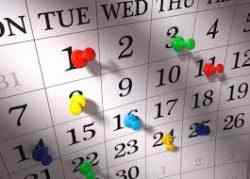To be a reader or not be? That is the question.
My name is Ariela Cruz, I am a junior in college, and this is my first semester at Chico State. I am a transfer student from a community college in Stockton and just moved to Chico a couple of days ago.Before moving to Chico, I lived in Sacramento for six months and had an amazing experience being a teacher’s aid for a Kindergarten class. During my high school years and first years of college, I had the opportunity to work with students from 8th grade to 11th grade. I always thought I enjoyed working with older students until I worked with Kindergarteners. It truly is another world in a kindergarten class and I admire the stamina and creativity that Kindergarten teachers possess. Kindergarteners are such love bugs, have such ingenuity, and have a hunger to learn, which I love. Thus being said, it’s not a surprise that my major is Liberal Studies, and I want to become a teacher. My goal is to ultimately become a high school or middle school math teacher. I am excited for the journey ahead and am grateful to be at Chico state surrounded with awesome professors and fellow pupils.
When I think of a good reader, I always think of my older sister. Since I could remember my sister always had a book in her hand. She had, and still has, a library of books that she was extremely proud of. As a little girl, I would always ask her to come play with me but she would always respond, “Wait til I finish this chapter”. My perception of what a good reader is and what a good reader does when reading a text for the first time, came from observing my sister. To me when a good reader reads a text for the first time, they read the text fast at first because they are so, “into it” and then goes back and reads it a second time slowly to analyze and ponder. A good reader makes connections to the text that they are reading for the first time so they understand it better. Not only do they make connections to the content but they question ideas in the text and formulate their own. A good reader looks up words they don’t understand in the text and they summarize what they read. A good reader that reads a text for the first time doesn’t just read to read the words, they read to understand and to connect to the text.
A positive experience I had with reading in my elementary years was in sixth grade. My teacher knew I liked to read and wanted to encourage me to continue reading and she told me she had book that she thought I would like. The name of the book, which is actually a part of a series, was called, “Among the Hidden” by Margaret Peterson Haddix. The book is a small book and I remember reading it in a day. I was hooked by the plot of the story and loved my teacher for introducing me to the author. I ended up reading the whole series, went on to read almost every book by the author. Even today, I continue to read books by the author and will read the, “Hidden” series over and over for fun.
Outside of school, I tend to read a lot. I am a big fan of John Grisham novels and own almost every one of his books. I also read the Bible a lot and read several spiritual help books.I have four nieces and nephews and just recently worked with kindergartners, so I read several children’s books. Just like several other college students I am an avid Facebook, Instagram and Yahoo news reader. I also have the funny habit of reading and re-reading the back my shampoo, conditioner, toothpaste and body soap descriptions. There are times that the content of whatever I am reading outside of school correlates with what I read in school. However, outside of school I tend to enjoy reading a lot more then when I am in school because it is my own choice to read and it’ s not forced.
In William’s article, ‘A puzzle to the rest of us: who is a reader anyway?’ he makes several claims in regards to who is a considered a reader. In the article he explains the different types of readers that people perceive as being, “The isolated reader” and or, “The engaged reader”. Williams talks about how being a reader changes as one grows older and how people/culture perceive readers changes as well. Williams also writes about how what a teacher would want in a reader is different from what the student perceives he or she is. He says, “Beyond decoding words and sentences, we think of a reader as a person who makes particular kinds of intertextual connections, who asks particular kinds of questions of a text, who reads at a particular intellectual distance from the text, who talks about more than the text’s meaning and analyzes its nature.” Reading has transformed from just reading to read into a much more involved process. The big takeaway for me of the article is when Williams encourages us to, “..talk more with our students about what kind of qualities we expect from the people we identify as readers. For one thing, we need to explore with students the multiple and varied nature of reading. We need to remind them that they are constantly being readers as they go about their lives, and we need to talk with them about all the ways they engage in reading and for what purposes. (We can also remind them that reading is often pleasurable and can be so in school as well as outside of it.)”.

